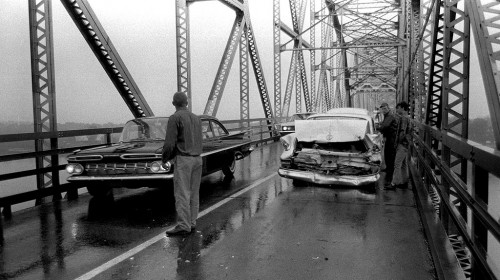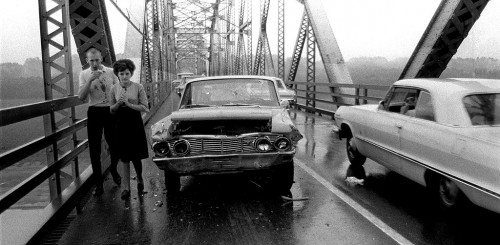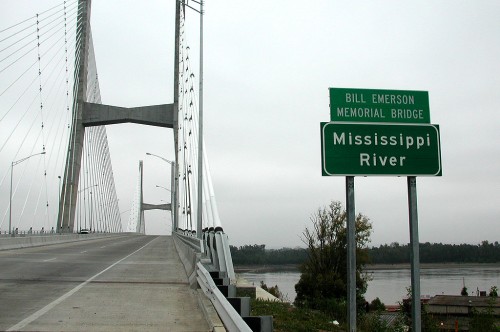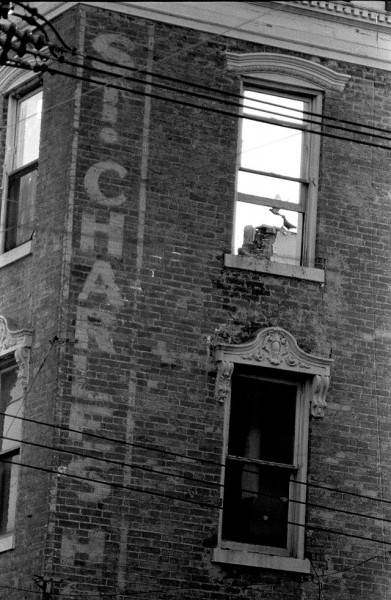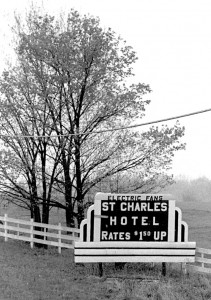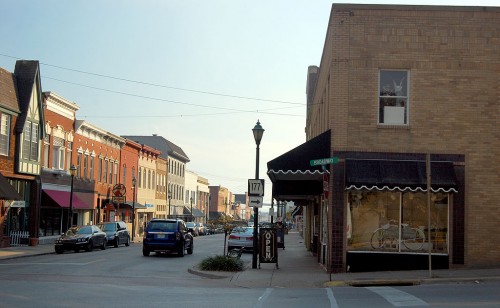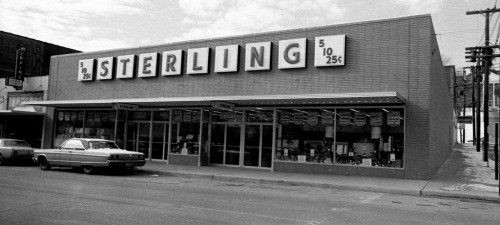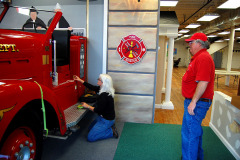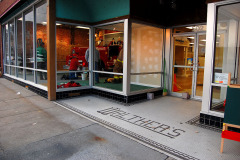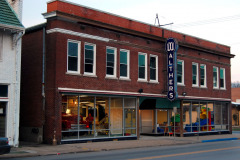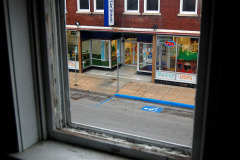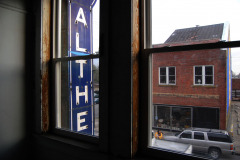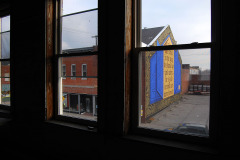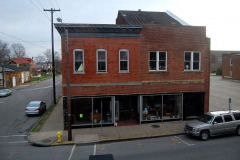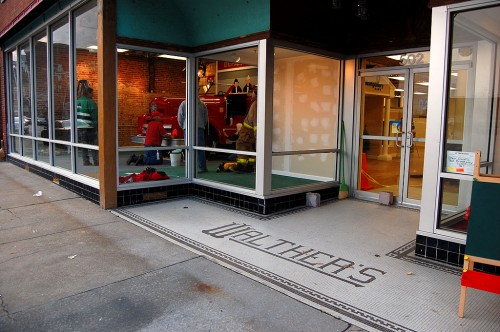 Volunteers were busy converting the old Walther’s Furniture Store and Funeral Home at 502 Broadway into the Discovery Playhouse when I was home earlier this spring. It opened April 22.
Volunteers were busy converting the old Walther’s Furniture Store and Funeral Home at 502 Broadway into the Discovery Playhouse when I was home earlier this spring. It opened April 22.
It looks like it’s going to be a great place for kids to cool off during Cape’s hot and humid summer.
Playhouse starting on the ground floor
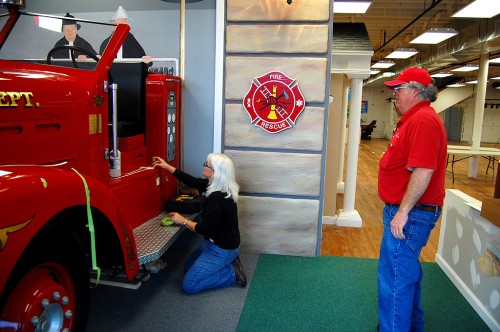 The Playhouse is a two-story building, with an attached section that rises to three floors. All of the work is concentrating on the first floor at this time, with the other floors to be developed as funds become available.
The Playhouse is a two-story building, with an attached section that rises to three floors. All of the work is concentrating on the first floor at this time, with the other floors to be developed as funds become available.
Landmark sign to stay
 I was told that the landmark Walther’s sign will remain, although it will be changed somewhat. I don’t know what those changes are.
I was told that the landmark Walther’s sign will remain, although it will be changed somewhat. I don’t know what those changes are.
The old parts of the building and the views from the windows fascinated me more than the playhouse in progress.
1916 was a big year
A Missourian roundup on Dec. 31, 1916, said that “1916 is prominent for the number of fine business houses erected, among them being the new home of the Buckner-Ragsdale, ‘Quality Corner Store,’ a handsome structure, the upper floor of which is occupied by the Cape Girardeau Business College; Walther Brothers Furniture Store, one of the largest in Missouri outside the three largest cities; the I. Ben Miller ice cream and candy factory, declared by State Dairy Commissioner Bennett to be the finest in the State of Missouri; the Meyer-Suedekum Hardware Company’s building and others.”
That’s a lot of landmark businesses in year. Meyer-Suedekum (now Meyer Supply) is the only one that has survived.
501-503 Broadway
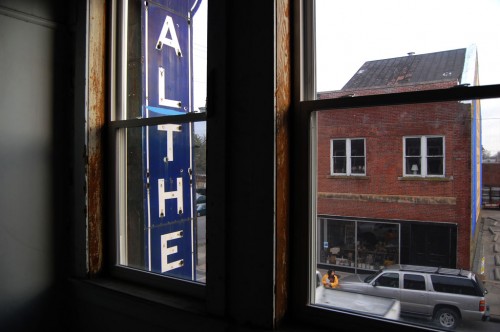 Looking to the south from the second floor of the building, you can see 501 and 503 Broadway across the street. Hinchey-Greer Merchantile company occupied 501 Broadway around 1906. Alvin Cotner modified the building in 1919 or 1920 to house the Auto Parts Company, which was there until 1957. Cape Paint and Glass occupied the property from 1958 through 1991. An interior connection between the two buildings was made somewhere between 1908 and 1915.
Looking to the south from the second floor of the building, you can see 501 and 503 Broadway across the street. Hinchey-Greer Merchantile company occupied 501 Broadway around 1906. Alvin Cotner modified the building in 1919 or 1920 to house the Auto Parts Company, which was there until 1957. Cape Paint and Glass occupied the property from 1958 through 1991. An interior connection between the two buildings was made somewhere between 1908 and 1915.
Mural sponsored by Trinity Lutheran Church
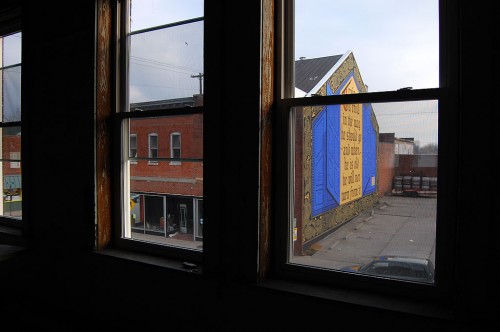 A mural, sponsored by Trinity Lutheran Church is on the west wall of 503 Broadway. It reads, “Train a child in the way he should go and when he is old he will not turn from it.” That’s probably fitting to be across from the Discovery Playhouse.
A mural, sponsored by Trinity Lutheran Church is on the west wall of 503 Broadway. It reads, “Train a child in the way he should go and when he is old he will not turn from it.” That’s probably fitting to be across from the Discovery Playhouse.
It’s easy to get lost in old newspaper stories
While researching the Walther’s history, I got sidetracked with stories of the 1918 Influenza Epidemic and accounts of local boys going “over there” to fight the “huns.” One thing that surprised me on the front page of the May 13, 1921 Missourian, was a pair of obituaries.
 The first was three paragraphs giving an account of the funeral of Allbright Walther, retired furniture dealer of Cape Girardeau. It contained very little personal information.
The first was three paragraphs giving an account of the funeral of Allbright Walther, retired furniture dealer of Cape Girardeau. It contained very little personal information.
Directly under it, was one headlined, “Sam Randol, Ice Dealer Is Dead; Long Illness Fatal to Colored Man.” It went on to say that “Sam Randol, well-known colored ice dealer, died at his home…following a long illness with dropsy. It listed his relatives and the organizations he belonged to and some funeral arrangements.
It concluded by saying that “Randol was among the better colored citizens of Cape Girardeau and stood high both among the people of his race as well as among the white citizens. He had been in the ice business here since a young man and was known by most every family in the city.”
I would never have expected the second obit to have been given such prominence in that era. He must have really been an exceptional person.
Walther’s was the city’s oldest retail store
A business column announcing the closing of the furniture store in 1984 said it had been open continuously for 120 years, making it the oldest retail business in town.
Gallery of photos from Walther’s Furniture / Discovery Playhouse
Here is a selection of photos taken of the Discovery Playhouse renovation and views of the neighborhood. As always, click on any image to make it larger, then click on the left or right side of the photo to move through the gallery.
 The old Cape Mississippi River Traffic Bridge was an adolescent adrenaline rush, a white-knuckled journey of fear and angst; it was an inconvenience, it was the site of personal and family tragedy. It also opened up Cape Girardeau to Illinois and points east when it became the first bridge across the Mississippi River between St. Louis and Memphis.
The old Cape Mississippi River Traffic Bridge was an adolescent adrenaline rush, a white-knuckled journey of fear and angst; it was an inconvenience, it was the site of personal and family tragedy. It also opened up Cape Girardeau to Illinois and points east when it became the first bridge across the Mississippi River between St. Louis and Memphis. The steelwork has all been removed, but they were still working on removing the bridge piers when I shot this photo from the Illinois side of the river in October of 2004.
The steelwork has all been removed, but they were still working on removing the bridge piers when I shot this photo from the Illinois side of the river in October of 2004. The massive piers that held the bridge up were the last parts to be demolished. This photo shows the flood gates that are closed, blocking north and south rail traffic when the river gets high. I prowled around under the bridge here and picked up a few souvenir pieces of steel. The Missourian said 160,000 rivets were used in building the bridge.
The massive piers that held the bridge up were the last parts to be demolished. This photo shows the flood gates that are closed, blocking north and south rail traffic when the river gets high. I prowled around under the bridge here and picked up a few souvenir pieces of steel. The Missourian said 160,000 rivets were used in building the bridge. The decorative archway over the Cape approach to the bridge has been preserved and a portion of the span has been turned into an attractive viewing area. I wish that the whole bridge could have been preserved for bicycles and pedestrians like the Chain of Rocks Bridge north of St. Louis, but the Coast Guard considered having two bridges that close together to be a navigation hazard.
The decorative archway over the Cape approach to the bridge has been preserved and a portion of the span has been turned into an attractive viewing area. I wish that the whole bridge could have been preserved for bicycles and pedestrians like the Chain of Rocks Bridge north of St. Louis, but the Coast Guard considered having two bridges that close together to be a navigation hazard.





















